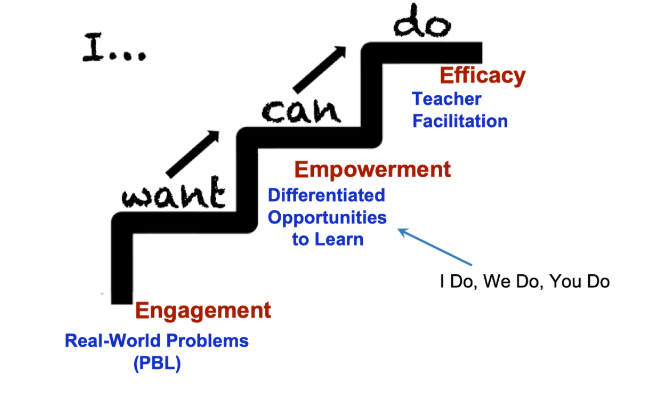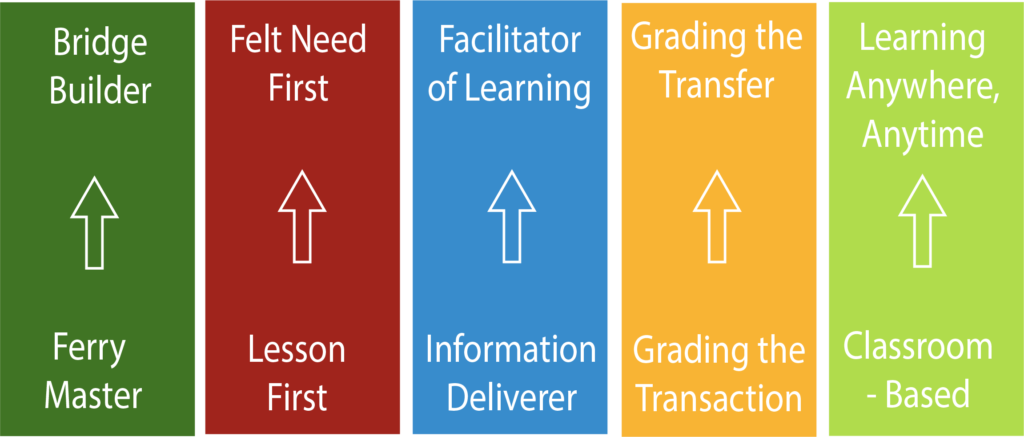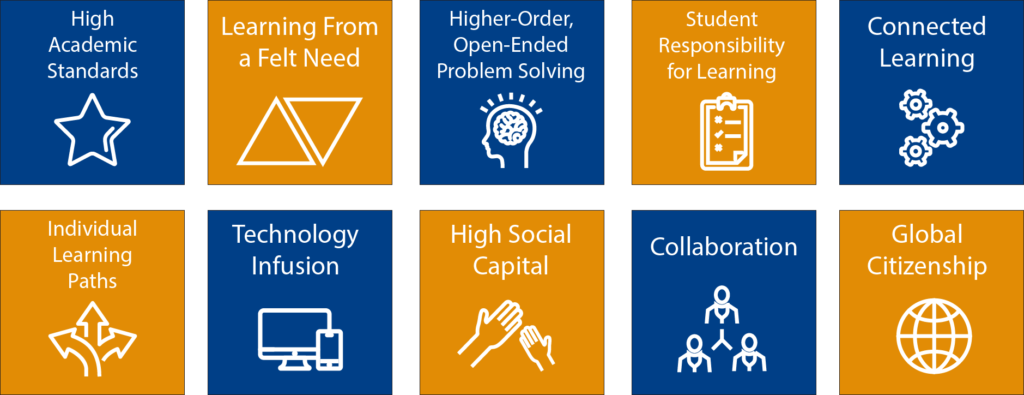A Systems-Based Instructional Framework
“The Learner-Active, Technology-Infused Classroom™ is a framework that includes problem-based Authentic Learning Units (ALUs), a collection of structures that put students in charge of their own learning, and powerful teacher facilitation of learning” (Sulla, 2019).
We believe that the goal of schools should be Efficacy… which comes from Empowerment… which begins with Engagement! Efficacious students can change the world!
As described in Students Taking Charge by Dr. Nancy Sulla…
– Students engage in real-world problems that provide a “felt need” for building curricular skills and concepts.
– Students learn independently and collaboratively with classroom colleagues and others around the world.
– Students use technology seamlessly as a tool for learning.
– Students manage projects, set goals, assess progress, identify resources for learning, and more!

The Five Paradigm Shifts

From Ferry Master to Bridge Builder
Student agency, which leads to greater student engagement and, thus, retention of learning, depends on teachers shifting their roles from being purveyors of information to being architects and facilitators of complex learning environments that provide students with differentiated opportunities to learn, combined with choice and voice in their learning paths.
From Lesson First to Felt Need First
Students delve more deeply into content and retain more when their efforts are driven by a personal “felt need” to learn. In a more traditional approach to education, the teacher presents information to the students through a series of lessons. At the end of the unit, the teacher may provide a test or project for the students to complete. Students may perform adequately on the test or project, but just a few weeks later may not remember the content. If teachers were to begin by presenting students with an authentic, problem-based task, students would have a felt need to learn and retention of content would improve.
From Information Deliverer to Facilitator of Learning
Given the shift away from teacher-dependent learning environments, the teacher must shift focus from disseminating information and lessons (much of which can be found already on the internet) to curating a powerful collection of learning opportunities, and then facilitating learning to ensure that all students achieve at high levels.
From Grading the Transactions to Grading the Transfer
Using a problem-based approach to instruction requires teachers to become facilitators in the process, ensuring that all students learn at high levels and produce powerful solutions; any grading of the outcome product would reflect the teacher’s efforts more than those of the students. Therefore, it is important for teachers to implement assessment strategies that determine if, as a result of the problem-based unit, students can transfer that knowledge to other situations.
From Classroom-Based to Learning Anywhere, Anytime
The pandemic-related school closures of 2020 and 2021 shed light on how teacher-dependent classrooms were, with the “lesson” being the core element. When schools switched to remote and hybrid instruction, this did not prove to be effective. Rather than being teacher-dependent, learning environments need to become STUDENT-dependent, with students taking charge of their own learning. The core element of the classroom environment should be “student curiosity and drive” to ensure that learning continues beyond classroom walls.
The Ten Principles
The Learner-Active, Technology-Infused Classroom™ is based on ten guiding principles, which research shows are present in successful classrooms.

Check out our YouTube playlist showcasing videos created by some of our partner districts!
Read a published case study on the Learner-Active, Technology-Infused Classroom™.

